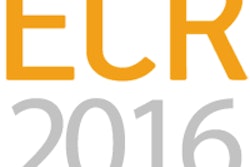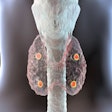
The regional health authority for the Île-de-France region has agreed to a new cloud-based data sharing project that goes beyond the remit of the existing Region Without Film (Région Sans Film, RSF) project, a massive effort that digitized the public hospital network in the Paris region that ended last year.
Under the new Shared Regional Medical Imaging Services (S-PRIM) project with the Agence Regional de Santé (ARS), image producers across the region, which to date includes around 200 medical centers, will be able to share data even if they already have their own PACS, RIS, or archive. This spells positive change for patients in terms of access to quality expertise and pertinent exams, according to the project organizers, the Healthcare Cooperation Group (Groupement de Coopération Sanitaire, GCS) also known the Digital Health Service (Service Numérique de Santé, Sesan).
A vital tender
GCS Sesan, a private, government-affiliated nonprofit organization, serves as the digital partner to healthcare services in the Île-de-France region and is responsible for implementing and updating IT solutions as health services evolve.
 To improve patient access to quality care, the capacity to share information is fundamental, according to GCS Sesan's CEO Pierre Boiron.
To improve patient access to quality care, the capacity to share information is fundamental, according to GCS Sesan's CEO Pierre Boiron."The new tender was vital because the old contract was limited for image sharing. Producers can now opt for image-sharing functionality only, rather than contractual PACS or RIS. This works better for centers with their own PACS and archiving systems," said Pierre Boiron, CEO of GCS Sesan, speaking to AuntMinnieEurope.com. "Image sharing is mandatory due to new reforms such as the Regional Hospital Group reform (Groupement Hospitalier de Territoire), which means that hospitals in the same group must organize their work centrally. In this new organization, doctors must be able to share patient information and images."
S-PRIM is principally for clinicians and radiologists who need to share medical images and reports, and other types of data-sharing solutions are planned for other disciplines and medical areas, including laboratory results and telemedicine, he added. S-PRIM comprises a regional image data-sharing solution and also a long-term image archive, but with the possibility to archive other data such as reports.
Nobody knows for sure the exact volume of traffic in the new network: In the last RSF framework, which included 39 medical centers, 2 million exams were produced and shared yearly. Ten million exams are already archived and will be migrated to S-PRIM.
"Image producers are free to contract with S-PRIM or remain outside the solution, we don't know yet how many will want to join the project. However, we think in the common PACS, production will increase significantly," Boiron said.
He noted that ARS has stated it will actively encourage all image producers in the region to use the S-PRIM image-sharing component.
The project is not without its challenges, according to Boiron, who cites moving from one cloud-based solution to another smoothly, efficiently, and quickly as the biggest priority. Second, France lacks a national patient identity database. Each image producer instead has a separate database for patients.
"Sharing images means sharing patient identity. The new S-PRIM solution will necessitate access to a regional patient database to permit identity sharing, while respecting patient consent and operating with a high level of security," he noted, adding that such a database technically already existed and S-PRIM was one user among others.
The third challenge involves the integration of S-PRIM with other regional IT solutions. This would require the creation of a security portal to allow a single sign-in that would then enable doctors to move between components without reauthentication each time.
GCS Sesan's evaluations committee spent a year negotiating with other companies before awarding the S-PRIM contract to medical imaging systems and IT solutions provider Carestream Health for a duration of six years, which began in April 2016.
"Our last project was closely watched by other regions and nationally. After RSF started in Île-de-France, six other regions established the same contract," Boiron said. "In each region, there is a GCS with the same mission, which is to build digital solutions for the region's healthcare. Each GCS regularly discusses difficulties and opportunities and shares experiences. It is therefore entirely possible that other regions will follow the S-PRIM model."
Boiron was keen to point out that although GCS Sesan is mandated to carry out the national strategy behind ARS for healthcare and IT policy, the organization doesn't work for the government, but for its members; private and public healthcare providers, and -- by dint of this -- for patients.
"S-PRIM is necessary to facilitate coordination and cooperation between actors. The quality of care will be increased with this solution as it will limit the redundancy of exams and because patients and doctors will be able to access high levels of expertise," he said. "The high density and mobility of the Île-de-France population necessitates different healthcare offers. The capacity to share information is fundamental."
Boiron explained how Sesan aimed to establish sharing solutions of international standard, and to let all actors select the most appropriate adapted solution for themselves.
"Look at phones. I am with one provider and you are with another, our phones have different functions and use different networks, yet we are still able to speak together. We have to offer the same with a high level of performance and security. Step by step our aim is to progress to this objective."



















